The Flemish Influence on the American Pilgrims - Part 3
From the desk of David Baeckelandt on Thu, 2009-08-13 17:02
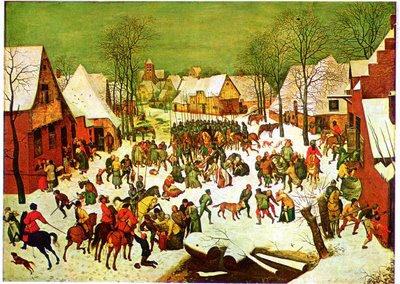
Recap of Previous “Flemish Influence on the Pilgrims” Parts

In my earlier articles, Part 1 & Part 2, we saw that from the time Flemings stormed across the English Channel as the largest component of William the Conqueror’s Invasion Force in 1066 up to the birth of the first Pilgrims in the late 16th century Flemings in the British Isles came, saw, influenced, and assimilated. The steady influx of Flemings to the British Isles in every subsequent century earned the Flemish William Caxton’s classification by the 16th century as one of the ‘seven races of England’. Thus, by 1600, many who spoke the King’s English and went by ‘English’ names were in fact of direct Flemish descent.
The Flemish ‘swarming’ prepared the crucible of the English body politic for the smooth reception of Flemish ideas of work and worship. Thus the late 15th century Catholic best-seller of Flemish mysticism from Thomas a Kempis called the Imitation of Christ manifested itself in the willingness of Englishmen to eagerly absorb Protestant tracts prepared on Flemish printing presses at Antwerp and brought over by Flemish printers who trafficked for the benefit of both God and Mammon. We saw that Martin Luther’s first and most vocal Protestant advocates in the Low Countries were Augustinians from the monasteries at Ghent and Antwerp and that these Flemish friars brought the Good Word back to Flanders.
The dominance of Flanders in printing, literacy, and trade combined with this early enthusiasm for the reading and disseminating the printed Word of God set the stage for the English Reformation by producing the very first Protestant martyrs – who were also from Antwerp. Flemish Protestants, often acting in league with the Flemish diaspora in England, financed and sheltered the Fathers of the English Reformation, made their work of translating the Bible into English possible and distributed the fruits of their work. In some cases they not only married themselves to the cause of the English Reformation but, as in the case of John Rogers’ wife/Jacob Van Meteren’s niece[i], even married off their daughters to make certain the cause of English reformation prospered.
At the same time, as we have seen (with more to follow), Flemish artisans brought needed skills to economically depressed regions of England[ii]. We have seen a glimpse of that in the earlier transfer of weaving skills in Bristol, Manchester, East Anglia, and select quarters of London proper. Oftentimes these artisans were migrants and moved freely and frequently between Flanders and England. Their skill sets, connections, and willingness to work harder and for lower wages sparked both envy and admiration. The Flemish immigrants’ mix of fervor and frugality meant that some Englishmen saw examples to be emulated while others saw “strangers” whose radicalism was worse than treason.
Our previous articles, then, brought us up roughly through the first third of the 16th century. This posting will trace one important thread to understand the Flemish influence on the “Father Pilgrims”: the role of Flemish Anabaptism in furthering the English Reformation. A subsequent post, shortly to follow, will show how Flemish Anabaptists and Calvinists seeded English Separatist thought and habits of the Pilgrims.
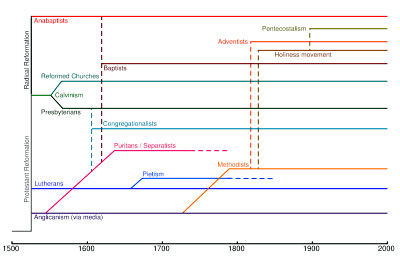
Anabaptism – Historical Context and First Spread in Flanders
Anabaptism simply defined is the belief that one must be an adult to become a Christian through baptism since a Christian requires a commitment to live the life that an infant cannot consciously make. Anabaptism arose as a result of Martin Luther’s admonitions to read the Bible and spread directly on the tail of the spread of the printed vernacular Bible. Because baptism was only possible, then, as an adult, they were deridingly called “re-baptizers” or, in the Greek, ‘Anabaptists’.
Anabaptist belief evolved but in the 16th century was often distilled down to a few key tenets. These included a belief in the Bible as the sole source of divine guidance, a belief that only adults could make the decision for themselves to be baptized, and a belief that oaths should not be made[iii], nor higher authorities recognized (since only God is recognized as an authority over men). As the movement spread and splinter sects formed, a communalism of goods as well as an expectation of the imminent end of the world also influenced their thinking and became hallmarks of the sect[iv].
Early examples of Anabaptists might – surprisingly – include English Protestant icons like William Tyndale, whom, as we saw earlier, was not only the Father of the English vernacular Bible but whose mission was critically aided and abetted by Flemish Protestants in Flanders and England[v]. Thomas More and other high English churchmen often labeled Tyndale an Anabaptist[vi]. This may have been more of a slur than an honest classification, but it illustrates the connection between access to Christian scriptures in the vernacular, the territory of Flanders[vii], and the fear ecclesiastic authorities had of that volatile mix.
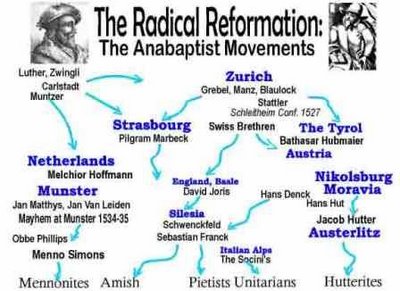
Many students of church history are aware that Anabaptism’s direct heirs today are the Mennonite and Amish denominations (some of whom do not consider themselves “Protestant”[viii]). However few are aware that in fact the Mennonite/Amish congregations have a strong strain of Flemish DNA. Many more still are unaware that the Anabaptists were the first to truly advocate something that we believe is a hallmark of Western democracy: separation of church and state. Historian Jonathan I. Israel pointed out that, “only the Anabaptists, [of the Low Countries] in their fervour, separated themselves from the rest of the community, refusing to attend church and forming their own prayer-gatherings in defiance of the government.”[ix].
Within Anabaptism a direct line of theological inheritance can be traced from the founder of the Pilgrims’ separatist beliefs, Robert Browne, to the Flemish Anabaptists. From the Brownist Separatist tradition to the birth of the Baptist, Presbyterian, and Congregationalist mainline Protestant denominations and their spread to the New World is a direct line. And of course, at many points along the way, the Flemish played a role.
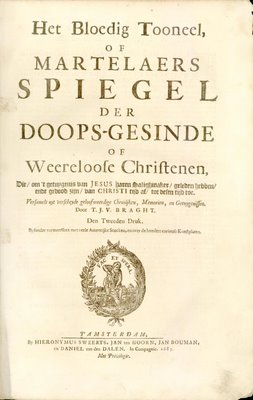
Rabid Revolutionaries?
The first Flemish Protestants found their authority in the pages of the Bible – as Thomas a Kempis had softly suggested in the late 15th century and as Luther loudly echoed in the first decades of the 16th century. Since the very first printed tracts of Luther’s preachings were disseminated outward from Flanders, the Flemish in Antwerp had looked to the written word – often as explained by street preachers - to guide their discernment of God’s Will.
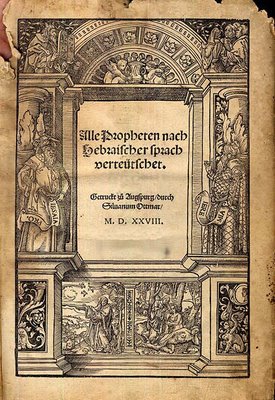
As Bibles were printed, Flemish Protestants noticed glaring differences between their interpretation of God’s Word and the centuries-old Catholic traditions. As evolution morphed to revolution, ritual-bound Catholics remade themselves as Christians who rejected all authority, civil and ecclesiastical, with the exception of their Bible (and those who professed to interpret it for them). Under Catholic tradition the priest interceded for man with God; under the Anabaptists (and, indeed, many Reformation Protestants), man no longer needed priests since now all Christians were called to be members of the priesthood.
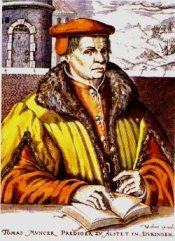
Anabaptists attempted to hasten these Biblically-inspired changes in various ways. To spread the Good Word, early Anabaptist leaders deviated in unexpected directions. One of the founders of the Anabaptist movement, Thomas Muntzer, in fact became convinced of the imminent end of the world. He wished to forward its ultimate overturn of the existing social order when he assumed leadership of rebel farmers in the Peasants War (1525). Except for those who died in the conflict, the world did not come to an end of course but the world did take notice of not only the death toll (over 100,000 killed) but also the revolt’s radical ideas of social equality, communal ownership of goods, and rule by a Bible-based theocracy. Unfortunately for the Flemish Anabaptists, the turmoil and the radicalism of Muntzer’s preaching came to define the external image of Anabaptists as rabid revolutionaries.

If Muntzer in 1525 suggested to many that Anabaptism was dangerous, Munster, a German city taken and run by self-proclaimed apocalyptic Anabaptists (1534-1535) confirmed it. In the wake of Muntzer’s beheading after the Battle of Falkenhausen, (May, 1525), early Anabaptist leaders, like Melchior Hofmans, a furrier by trade, fled, following the trade routes to the Netherlands. His fiery speeches inspired young, migrant cloth workers like Jan Beuckelzn of Leiden to believe that the end of the world was near.
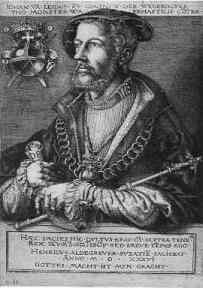
Jan van Leiden, as he was more commonly known, had sought migrant work in Flanders and England in the early 1530s, and there came under the influence of first the mild Menno Simons (spiritual father of Mennonites). Still later he fell under the sway of the more radical Anabaptists Melchior Hofmans, while the more pacifist brand of Anabaptists stayed loyal to Menno Simons and David Joris of Bruges. Believing that a “New Jerusalem” was not only at hand but actually to be formed at Munster, he and others journeyed there and put in place a vision of the future that victims of Stalin’s Soviet Union would find familiar.
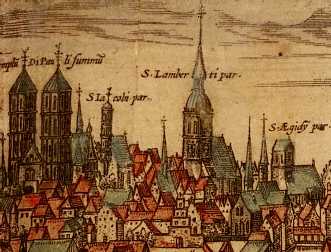
This Anabaptist city-state, before being subdued, degenerated into revolutionary bloodlust, communist excesses, and sexual debauchery. Catholic and Protestant princes found common cause to wipe out the Anabaptists at Munster. By late 1535, following an 18-month reign, the ‘New Jerusalem’ lay in smoldering ruins. Local princes marshaled every resource to root out any last vestiges of Anabaptist philosophy in German borderlands and warned others of the Munster revolt[x]. Temporal rulers outside Germany receiving the news, including Henry VIII, came to the conclusion that they must prevent Anabaptism spreading at all costs. For them the first step to eradicating Anabaptists was prohibiting small groups of artisans to meet in secret for Bible study.
Anabaptism – First Spread in Flanders
Although the first complete Bible in Dutch did not roll off the presses until 1526, Anabaptism spread early and quickly through Flanders. “Early in March 1524 a conventicler was surprised at Antwerp and those present were summoned by the magistrates. Virtually all of them were artisans: a cooper, painters, shearmen, a woodcarver, a cutler-cum-silversmith, girdlers, dyers, a pointmaker, a satinworker, grocers, a joiner, a shoemaker, tinkers, tailors…, a saddler, smiths, labourers, a silk dyer, a locksmith, a carter, and a dealer in earthenware.”[xi]
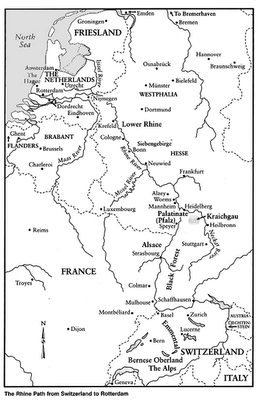
Those with the least to lose were the quickest to believe. Conversely, the upper classes tended to look down on this profession as unworthy of their social standing. So much so that Anabaptism was sometimes labeled a lower class phenomenon by Reformist wings of Protestants and Catholics alike. “In 1525 one inquisitor angrily asked whether scriptural interpretation should be left to ‘furriers and weavers’”.[xii] Since many of the first converts to the beliefs of Anabaptism were local clergy, oftentimes they lead cells of believers. “Nicholas Jansz. van der Elst, an erstwhile parish priest in Antwerp, used to lead a circle in Brussels in 1527, composed largely of artists and tapestry weavers, meeting in private houses.[xiii]
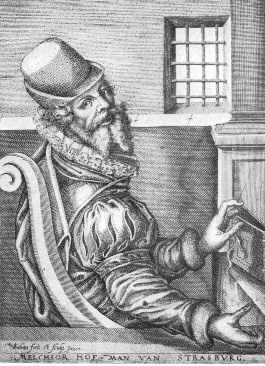
This is not to imply that the lower classes were illiterate. In fact visitors to Flanders and Brabant in the 16th century and even earlier were amazed at the widespread literacy. Francesco Guicciardini, considered the Father of Modern History and “writing in 1567, remarked that most of the ordinary people in the southern provinces [=Flanders, Brabant, etc.], including the farmers, were literate”.[xiv]
But even if they had been illiterate, there were many other informal channels to convey the Good Word. Sometimes this was through informal gatherings part of the tradition in Flanders from their neighbors, guild members and traveling merchants. “In the villages around Ghent evangelicals in the early 1530s used to withdraw to the tavern to discuss the gospel of the day after having attended mass”.[xv]
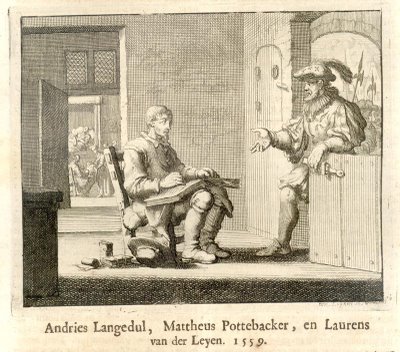
By the end of the 1530s, then, the term “Anabaptist”, in the minds of many magistrates, came to mean almost any Protestant who subscribed to neither the state-sponsored churches of northern Europe (which generally considered themselves part of a universal “Reformed” Christian church) nor the overwhelmingly German confession of Lutherans, and met in secret cells, separate from the community.
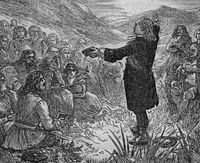
Dissenters Temporal and Ecclesiastic
As hinted above, the term ‘Anabaptist’ acquired an especially sinister connotation as a result of the Peasants’ War and Munster Revolt. To further heighten suspicion, Anabaptists also generally refused to take oaths of loyalty, serve as magistrates, and recognize temporal authority. Monarchs, regardless of whether Catholic or Protestant, viewed torture not toleration, as the only option in addressing this dissent.
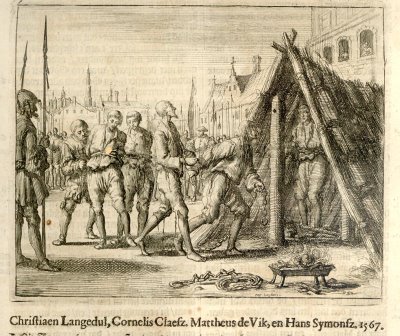
Sixteenth-century rulers in any case considered themselves the final arbiter of not only civil but also ecclesiastical authority. Such an idealogy then presented a threat not only to the ecclesiastical order but also an ipso facto challenge to the throne above it. As English Protestant Nicholas Lesse wrote in 1550:
“Papists, although they were right nought for the soul, yet were they good and profitable for the body for civil commonwealths, for the maintenance of civil justice, and all good politic orders. But as for these [Anabaptists] they are neither good for the body nor for the soul: yea, they are most mortal enemies and cruel murderers to both."[xvi]
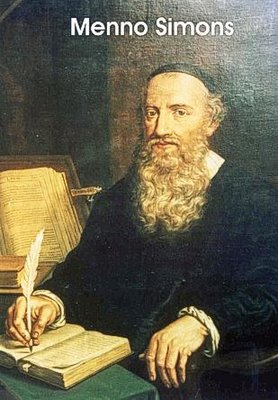
Menno Simons, Anabaptist leader and after whom the Mennonites take their name. Called "the most important figure in the Dutch reformation."
Fleeing Flemish Stakes to English Flames
With few exceptions, the flight of non-Catholic Flemings from the Southern Netherlands was part of “the largest uprooting experienced in early modern Europe”[xvii]. Some estimate as many as 180,000 fled the country[xviii]. Flemish Anabaptists came to England for the most part in multiple waves: in the mid 1530s as a result of the persecution after the fall of seditious Anabaptist Munster and in the 1550s as a result of renewed Catholic-Calvinist persecution. Later waves joined Calvinists fleeing the Duke of Alva’s Inquisition between 1567 and 1573 and of course as the Duke of Alva’s armies reconquered Flanders and Brabant in the 1580s, and finally after the Fall of Antwerp in 1585.
The British Isles had actually experienced something not too dissimilar to Anabaptism in the century before from a millennial, home-grown Christian group also inspired by Flemish weavers. Called the Lollards – from a Flemish term ‘lollen’, to mumble – the Lollards had shaken the established order before being driven underground in the late 15th century. The Flemish script of the Good Word inspired by Luther, and transmitted by Flemish traders and merchants in the 1520s and 1530s found fertile ground in Tudor England. In the view of Henry VIII and his ministers, Anabaptism was simply Lollardy in a new form. As historian E.G. Rupp put it, “the new Anabaptist was but old Lollard writ Dutch".[xix] As such, the template for dealing with Lollardy was already established by precedent: extirpation by fire, usually at a public burning.
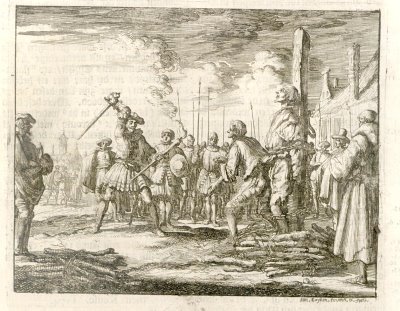
Initially, Henry VIII’s councilors really believed the growing movement around them was tied into the Lollards. So the first proclamations against heresy, in 1529 and 1530, were directed against “sects of heretics and Lollards”.[xx] The difficulty in combating the attractiveness of Anabaptist doctrines was expressed by one of the first official propagandists for the Tudors against the sect, William Barlow. In his book, A dyaloge descrybyng the orygynall ground of these Lutheran faccyons (1531) Barlow confessed, “I coulde haue founde in my harte to commytte my soule holly to theyr dirreccyon”.[xxi]
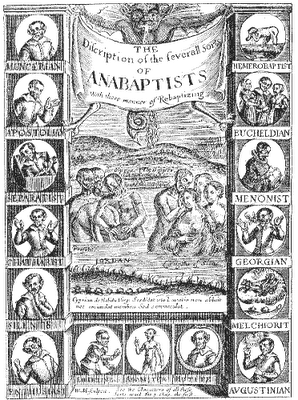
Passing the Word From Flemish to English
The first instance of direct persecution linking the spread from Fleming to Anglo-Saxon took place about the time Jan van Leyden (of Munster fame) was in England. Two Flemings, a Scot and six Englishmen with Anabaptist beliefs were arrested in connection with the importation and distribution of "the booke of Anabaptist confession" sometime in 1532[xxii]. These books (it was a shipment of 300) were presumably printed in Antwerp They met secretly for worship and planning in London, at the house of a John Raulinges and their leader was a Flemish preacher by the name of Herman Bastian. The captives described him as "the bishop & reader of the Anabaptists."[xxiii] Later, in 1538, this same Herman Bastian would be caught, arrested, and abjure his Anabaptist faith, but not before so alarming the German princes who caught him that they felt compelled to draft a letter to Henry VIII warning him of “this plague” of “Anabaptist madness”.[xxiv]
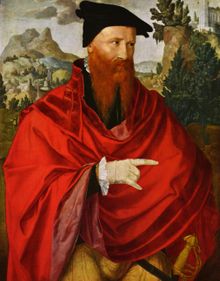
Of course, one of the primary reasons Flemings were in England in the first place was to flee the Hapsburg Catholic persecution in Flanders. The fleeing Flemings naturally followed established trade routes – most heavily used for the cloth trade – across the North Sea and English Channel[xxv]. The exile communities made this Flemish refuge possible. The economic justification for routes and refuge was the flourishing trade in textiles[xxvi].
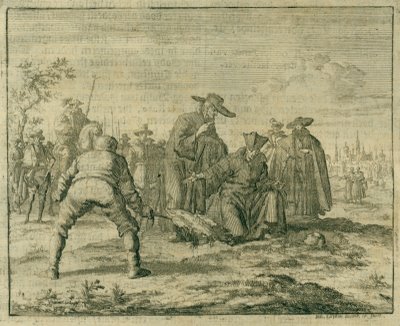
Many of the Anabaptists settled in London’s Southwark enclave, or Southhampton but especially in the port towns on the east coast of England. Towns like Norwich, Sandwich, Ipswich and Lavenham. In Norwich, the second largest city in England for at least the period 1500 to 1660, they became as much as 40% of the total population.[xxvii] As was the practice in much of Europe for resident aliens, the enclaves of Flemish refugees were often exempt from local laws. However, when these “Strangers” began to disseminate their heresies among the native (English) population the authorities took drastic action.
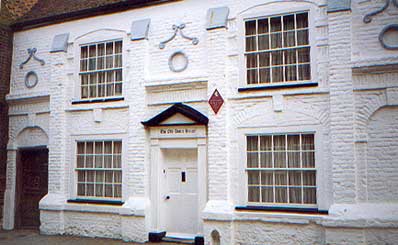
Although Henry VIII repudiated papal authority by the Act of Supremacy in 1534, he kept the Anglican church orthodox, from the Roman Catholic perspective of doctrines and practices. The Anabaptists threatened this order, and so, like the Lollards before them, Henry marched them to the stake. As historian R. W. Dixon noted: "there were more Anabaptists burned by Henry the Eighth than Lollards in the whole of the previous century."[xxviii]
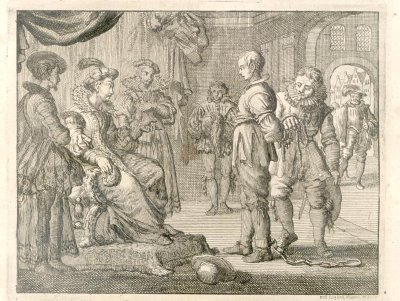
In that same year, 1534, Henry captured and tortured 23 Flemish Anabaptists. Fourteen were eventually burned at the stake at Smithfield (the most common grounds for burning heretics in Stuart-Tudor England). The remainder (mainly women and young boys) were sent back to the gaol in Catholic Flanders to be dealt with by the authorities there[xxix].
On 1 October, 1538 Henry VIII issued a commission to Archbishop Cranmer "to search for and examine Anabaptists . . . and destroy all books of that detestable sect." In November 1538 two proclamations went out against Anabaptists: the first prohibited the printing, importation, and possession of their “naughty printed books”[xxx], and the second ordered all rebaptized persons to leave the realm on pain of death and confiscation of possessions[xxxi].
Those edicts were triggered by immediate events since we hear that on November 29th, 1538, Pieter Franke – actually a Bruggeling by the name of Pieter de Bontwerker[xxxii] – and his wife, both Flemish Anabaptists, were burned at the stake[xxxiii]. Franke’s martyrdom was at Colchester while his wife perished separately at the execution grounds at Smithfield. Other commentators of the time described Franke as a "goodly yong man, and about 22 yeres of age[xxxiv]”, and his martyrdom is said to have impressed and converted many Englishmen who witnessed it at Colchester.
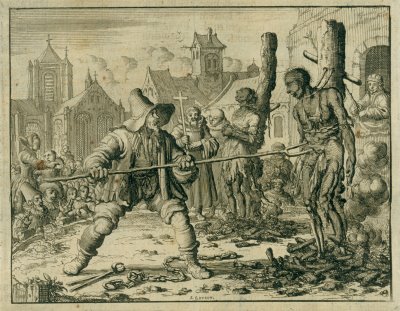
An eyewitness account comes from the pen of a John Bale, who in his anti-Catholic, A Mysterye of Inyquyte (Geneva, 1545) wrote:
“In the myddes of the fyre also he [Franke/de Bontwerker] stode with oute feare, sorowe, tremblynge, changynge of countenaunce, or dissolute mouyng: which were playne tokens of a conscience not trobled, but assertayned throughlye of a moche better lyfe after this lyfe. This learned I in Colchestre of them which by his onlye deathe or pacient sufferance, conuerted from youre papisme vnto true repentaunce, where as nothynge afore coude conuert them.”[xxxv]
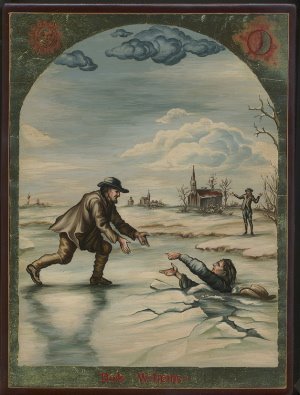
The next month (December, 1538) two young women from Leuven, Anneken Jans and Christiana Michiel Barents, were arrested while in transit from England to Delft. As was often the case with Anabaptists, for their refusal to recant they were drowned (in a cruel parody of baptism) at Rotterdam, January 7th, 1539. Under interrogation, Christiana confessed that she became an Anabaptist through the proselytizing of another Leuven refugee by the name of “Lijnken”, who had been martyred earlier in England[xxxvi]. Paradoxically then, Henry VIII’s policy of exterminating Flemish Anabaptists was converting both Englishman and Fleming resident in England to the Anabaptist faith.

All the king’s men must have realized this as well for on the 26th of February 1539, Henry VIII issued a pardon to all native-born ‘heretics’ in England. Foreign-born ‘heretics’ however were not pardoned. “This appears to indicate that a considerable number of English subjects were affected by the new beliefs and that persecution had done more to spread than to counteract them.”[xxxvii]
However, these edicts apparently did not deter Flemish Anabaptists any more than before from spreading the Word. For just a few months later, in July, 1539, Henry felt compelled to issue the Six Articles Act. The Acts confirmed many Catholic practices (such as the Mass) and reiterated that violation of the belief in Transubstantiation was punishable by burning at the stake[xxxviii]. Some of the first to be persecuted for violating the Six Acts were Flemish refugees. “15 or 20 strangers mostly from Flanders, and all Anabaptists” were imprisoned in April 1540 but their fate is unknown[xxxix]. Two Flemish Anabaptists and an Englishman, however, were martyred together in June, 1540, “for speaking irreverently of the Holy Sacrament and refusing to revoke their errors”[xl]. The following month (July, 1540) Henry reiterated his pardon for heretics – all except Anabaptists[xli].
King Henry VIII’s death in 1547 momentarily halted persecutions of Flemish ‘heretics’ in England. The end of his reign however only served to inflame Flemish and other Protestant “Strangers” against Roman Catholic rituals and practices. These disturbances presaged the iconoclasm of 1566, the so-called Beeldenstorm, that began in Flanders and swept north to Holland, ushering in the Dutch Revolt. As the riots in England spread, mainly in heavily Flemish enclaves in the eastern coastal towns of England, groups of young Englishmen joined their ranks in protest.[xlii]
Under the reign of his young son, Edward VI, rule of the English realm effectively fell to a circle of Tudor high churchmen. Thomas Cranmer, Archbishop of Canterbury, in January, 1550, was issued instructions by the King’s Council to root out and interrogate any suspected Anabaptists. Cranmer and others thought that it may be better to try and contain rather than martyr. This lead directly to a license for the Ghentenaar Calvinist minister Martin Micronius[xliii] to set up and run what he called a "Flemish Church" but which has come to be known as the “Dutch Church”, at the formerly Augustinian monastery called Austin Friars in London. The expectation of the establishment was that a more orthodox, reformed Protestant congregation would be more easily and accurately monitored. Also, segregation of the Strangers from the English would limit the opportunities for ‘infection’ of the body politic. Or, as the young king wrote in his diary, for "the avoyding of al sectes of Anabaptistes and such like.”[xliv]
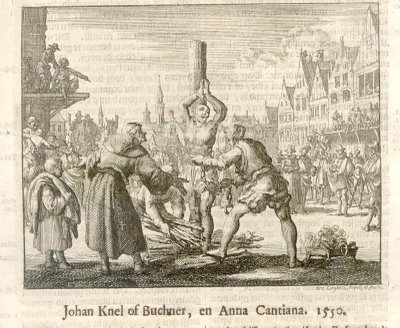
By his approach at containment and persuasion, Archbishop Cranmer was deemed insufficiently aggressive by some in King Edward’s government. Bishop John Hooper (married to an Antwerpenaar[xlv]) and John Knox, were instead given the assignment of rooting out the rot in the two areas swarming with both Flemings and heresies: London and Kent.[xlvi]
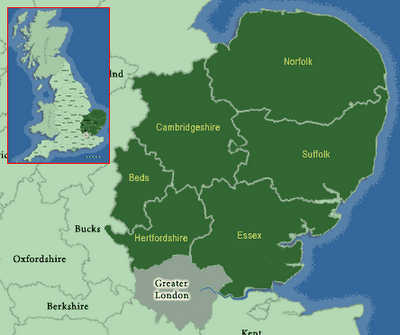
The failure of either the carrot or the stick frustrated government and high church officials in England. The afore-mention John Hooper, for example wrote to a colleague (in 1549) that "Anabaptists flock to the place [where Hooper gave lectures in London] and give me much trouble with their opinions respecting the incarnation of the Lord." In June, 1550, he added that the Flemish-refugees of East Anglia (Kent and Sussex) were "troubled with the frenzy of the Anabaptists more than any other part of the kingdom."[xlvii]
With the accession of Queen Mary (1553-1558) the burnings of religious dissenters resumed. As we saw earlier, the first martyr was the Bible translator, John Rogers (aka, Thomas Matthews, author of the Matthews Bible), married to Jacob Van Meteren’s Antwerpenaar niece. During "Bloody" Queen Mary’s reign the persecution of Anabaptists became that of Protestants in general.
John Foxe in his Book of Martyrs - the hallmark book beyond the Bible for Anglicans, Puritans and Pilgrims alike - chronicled the martyrdoms of not only mainstream Protestants like John Rogers but included the sufferings of many of the Flemish Anabaptists above. Since the greater percentage of these martyrs came from towns in the eastern counties and from the artisan classes, some historians estimate that as many as 80 per cent may have been Anabaptists.[xlviii] And, as we have seen above, there was a Flemish connection for many of these martyrs.
In the martyrdom of the Flemish Protestants in mid-16th century Tudor England, they not only gained paradise for themselves but, as we shall see, inspired a select group of English Christians in the eastern counties of England to separate from the Church of England and in the end establish a new paradigm of government in the New World. This new community of believers, completely separate from any state church, were what we know today as the "Pilgrim Fathers". The nascent state they formed set the tempo for the modern world by strictly adhering to a separation of church from state.
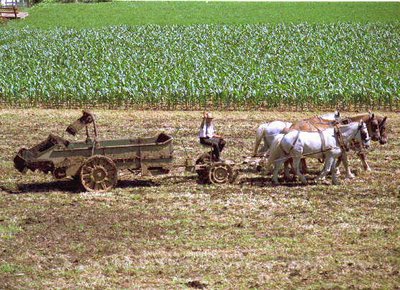
My next posting will pick up with Queen Elizabeth I’s reign and follow the thread of Flemish influence on the Pilgrims to their homes in eastern England.
Endnotes
[i] John J. Murray, Flanders and England: The Influence of the Low Countries on Tudor-Stuart England, (Antwerp: Fonds Mercator, 1985), p.56 claims that John Roger’s wife, Adriana de Weyden, was Jacob Van Meteren’s sister-in-law and others his daughter, although the consensus appears that she was his niece. John Foxe says that this kinswoman of Van Meteren “more richly endowed with virtue and soberness of life, than with worldly treasures”. Foxe, Martyrs,V, p.840 quoted in David Daniell, The Bible in English, (London: Yale University Press, 2003), p.191.
[ii] The premier source for this viewpoint – that Flemish skilled workers made a decisive contribution to the development of English industry – has been the indispensable (for more than 100 years) William Cunningham in his Alien Immigrants to England, (London:1897), Kesslinger reprint (2008).
[iii] Ironically, given the mainstream Anabaptist pacifism, and aversion to oath taking, the Munster Anabaptists required an oath in the prosecution of their struggle against the Bishopric. See: http://www.lwl.org/westfaelische-geschichte/portal/Internet/index_aufruf.php?url_home_unten=http%3A%2F%2Fwww.lwl.org%2Fwestfaelische-geschichte%2Fportal%2FInternet%2Ffinde%2FlangDatensatz.php%3FurlID%3D1363%26url_tabelle%3Dtab_quelle for the text in German.
[iv] Please see the “Millenialism in the Reformation” online site at http://www.lessonsonline.info/MillennialismReformation.htm . For a superb blog on chiliastic millennialism please see http://www.chiliasmchronicles.blogspot.com/
[v] This is a claim that some successors to the Anabaptists, such as the Baptists and the Mennonites, make claim to. See, for example: “William Tyndale: The Father of Our English Bible” at http://www.wayoflife.org/articles/williamtyndale.htm. Tyndale’s assistant in Anywerp was William Roy, the son of a naturalized Brabanter and, like Tyndale, a graduate of Cambridge. See Murray, Flanders and England, op.cit., p.49. Murray points out the key role of Erasmus in the English Reformation and the connections between Cambridge, Leuven, Sir Thomas More, and the breakdown in respect for the Roman Catholic church’s doctrines and practices.
[vi] Erasmus, Desiderius, Opus Epistolarum Des. Erasmui Roterodami, (Basel, 1529) cited in Irvin Buckwater Horst, The Radical Brethren:Anabaptism and the English Reformation to 1558, (Nieuwkoop: B. De Graaf, 1972), p.40.
[vii] Throughout this blog my interest is to promote the history of the Dutch-speaking people of what is often called the Southern Netherlands. At that time of course these territories were represented by various political entities which do not neatly fit into the current territorial borders of modern day Flanders and/or had their own unique history. These include the County of Flanders, the Duchy of Brabant, the Lordship of Mechelen, the Duchy of Limburg, etc. But for the people I am writing this for – Flemish-Americans like my sons Ludovicus and Matthias – these distinctions are secondary to understanding the contribution of Flemings to the world. Thus, in my blog postings I refer to all those Dutch speakers from what might be called modern-day Belgium as Flemings. That said, the historical record is real and the distinctions of course existed. I would like to thank Mijnheer Jan Neckers, himself a published historian on Mechelen, as well as author of many historical documentaries, for this important point.
[viii] William R. McGrath, “The Anabaptists: Neither Catholic nor Protestant” at http://www.cbc4me.org/articles/Baptist/04-McGrath.pdf . For the view that Baptists predate Catholicism and are therefore not Protestants please see http://www.fbcsh.org/origins.php. Also, see the Beachy Amish Mennonite website’s FAQ where they say: “The Beachys are part of the Anabaptists, a Christian religion…Anabaptists are neither Catholic nor Protestant, though they are often categorized as a Protestant group by writers unfamiliar with Anabaptist history and doctrine.” http://www.beachyam.org/FAQs.htm
[ix] Jonathan I. Israel, The Dutch Republic: Its Rise, Greatness, and Fall 1477-1806, (Oxford: University Press, 1995), p.85. On the issue of church and state separation and the Anabaptsits' please see "The Anabaptists: Did You Know?" in Christianity Today, 1985 online archive: http://www.ctlibrary.com/ch/1985/issue5/506.html. On the issue of Flemish contributions to legal heritage of the Anglo-Saxon states, please see R.C. van Caenegem, Historical Considerations on Judicial Review and Federalism in the United States of America, With Special Reference to England and the Dutch Republic, (Brussel: KVAB, 2003). My deep gratitude and appreciation to Professor Matthias Storme for both making me aware of Professor Van Caenegem's work and for advice on several key references.
[x] Later, apologists for Communists and Nazis alike hearkened back to this millennial movement in books, paintings, stamps and philosophy. For the Nazi connection see George Von Der Lipp, et.al., A History of the Munster Anabaptists: Inner Innigration and the Third Reich, (Hampshire: Palgrave Macmillan, 2008) http://www.palgrave.com/products/title.aspx?PID=288750 . For the DDR stamps see http://www.danstopicals.com/ml4.htm . For a reference to Friedrich Engels appropriation of the Anabaptist banner and actions in the Peasant War to Marxist rhetoric see http://en.wikipedia.org/wiki/The_Peasant_War_in_Germany . A succinct online read of the Peasants’ War can be found at http://www.geocities.com/Vienna/Strasse/9298/zuefallig/bauernkrieg.htm . The world’s largest oil painting, commissioned by the DDR as a monument to the Socialist legitimacy of the Communist state through the hijacking of the Peasant War history, see the museum built around the commemoration of the Battle of Falkenhausen here: http://www.panorama-museum.de/ .
[xi] Duke, op.cit., p.33 citing CD, IV, pp. 259-61 and C.C. de Bruin, De Statenbij[b?]el en zijn voorgangers, (Leiden, 1937), p.195
[xii] Duke, op.cit., p.37 citing CD, IV, p. 467
[xiii] Duke, op.cit., p.36 citing CD, V, pp.237-42.
[xiv] Duke, op.cit., p.33 citing J.G.C.A. Briels, “Zuidnederlandse onderwijksrachten in Noord Nederland, 1570-1630” in Archief voor de geschiednis van de Katholieke kerk in Nederland, XIV, (1972), pp.148-49.
[xv] J.Decavele, De dageraad van de reformatie in Vlaanderen, 1520-1565, I (Brussel, 1975), pp.268-270 cited in Duke, op.cit., p.39 footnote 70.
[xvi] Meic Pearse, “Fear of ‘Anabaptists’ in Sixteenth-Century England” Originally published in Anabaptism Today, Issue 3, June 1993. sourced at http://www.anabaptistnetwork.com/book/export/html/180
[xvii] Nigel Goose, “Immigrants in Tudor and Early Stuart England”, in Nigel Goose and Lien Luu, Immigrants in Tudor and Early Stuart England, (Portland: Sussex Academic Press, 2005), p.1.
[xviii] Ibid.
[xix] E.G. Rupp, Studies in the Making of the English Protestant Tradition (Mainly in the Reign of Henry VIII) (Cambridge: University Press, 1966) p.1
[xx] Horst, Radical Brethren, op.cit., p.37. Horst also mentions (p.40) that Erasmus had wrote to Sir Thomas More in 1528 saying that it had spread “more widely than anyone had suspected”.
[xxi] Ibid, p.45
[xxii] Ibid, pp.49-51
[xxiii] Horst, Irvin B., Harold S. Bender and Alan Kreider. "England." Global Anabaptist Mennonite Encyclopedia Online. 1990. Global Anabaptist Mennonite Encyclopedia Online. Retrieved 07 December 2008 http://www.gameo.org/encyclopedia/contents/E565.html . Please note that a good part of the following depends heavily on Horst’s online article.
[xxiv] Horst, Radical Brethren, op.cit., pp.81-85
[xxv] I will discuss the cloth/textile trade and Flanders’ contribution not only to England but also to the Pilgrims in a subsequent post.
[xxvi] Horst, et.al.,”England”, op.cit.
[xxvii] Goose, op.cit., p18. One enduring legacy of this huge influx is the prevalence of Flemish architecture in these towns. See the online pictorial examples at http://waysidearteastanglia.me.uk/home/dutchgables.htm.
[xxviii] Horst, et.al.,”England”, op.cit.
[xxix] Murray, Flanders and England, op.cit., p.53
[xxx] Horst, Radical Brethren, op.cit., pp.86-87
[xxxi] Ibid
[xxxii] A.L.E. Verheyden, Het Brugsche Martyrologium, (Brussel: 1945), p. 45,cited in Horst, Radical Brethren, op.cit., p.88
[xxxiii] Horst, Radical Brethren, op.cit., p.88
[xxxiv] Ibid, p.87
[xxxv] Ibid, p.89. Interestingly, Bale’s book was printed at Geneva.
[xxxvi] Horst, et.al.,”England”, op.cit.
[xxxvii] Ibid
[xxxviii] See http://www.luminarium.org/encyclopedia/sixarticles.htm
[xxxix] Horst, Radical Brethren, op.cit., p.93
[xl] Ibid
[xli] Horst, et.al.,”England”, op.cit.
[xlii] Murray, Flanders and England, op.cit., p.54
[xliii] See Krahn, Cornelius. "Micronius, Marten (ca. 1522-1559)." Global Anabaptist Mennonite Encyclopedia Online. 1957. Global Anabaptist Mennonite Encyclopedia Online. Retrieved 12 January 2009 http://www.gameo.org/encyclopedia/contents/M527.html . In a letter to Henry Bullinger (May 20th, 1550) Micronius (Marten De Cleyne) states that “indeed it is a matter of the first importance that the word of God should be preached here in Dutch, to guard against the heresxies which are introduced by our countrymen.” Hastings Robinson, Original Letters Relative to the English Reformation, Written During the Reigns of King Henry VIII, King Edward VI, and Queen Mary: Chiefly From the Archives of Zurich (London: University Press, 1847), Letter CCLX p.560. Curiously, in this same letter, Micronius refers to this congregation as the “Flemish church” cf ibid, p.561 and p.565.
[xliv] Ibid. Interestingly, Cranmer graduated from Cambridge the same year as Tyndale and may have known him. “The great majority of the men who led English Protestants were in residence at Cambridge during the years when the White Horse meetings there [1515-1520] were in progress. This is true of Tyndale, Joye, Roy, Barnes, Coverdale, Bilney, Latimer, Cranmer, Frith, Lambert, Ridley, Rowland Taylor, Thomas Arthur, Matthew Parker and many others who preached, wrote, accepted high office or embraced martyrdom in the cause.” Dickens, A.G., The English Reformation, 1964 2nd ed., (1989) , p. 91 quoted in David Daniell, William Tyndale: A Biography, (New Haven: Yale University Press, 1994), Nota Bene ed 2001, p.49.
[xlv] Murray, Flanders and England, op.cit., p.54
[xlvi] Horst, et.al.,”England”, op.cit.
[xlvii] Ibid
[xlviii] Ibid
This article was originally published on the "Flemish American" weblog.

The Bloody Theater
Submitted by dchamil on Fri, 2009-08-14 15:26.
The page titled "Het Bloedig Tooneel" is, in English, "The Bloody Theater, or the Martyrs Mirror of the Defenceless Christians." This book, recounting the appalling tortures and burnings at the stake inflicted on perfectly harmless people, has been translated and kept in print for many years by the Mennonites.